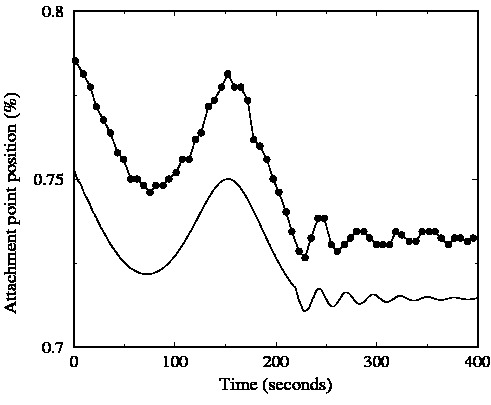Superfluid Helium Vortices
Understanding vortex motion is important for studies of neutron stars, superconductors,
and turbulence in classical fluids. We have an unusual technique for observing the motion
of a single superfluid vortex through its effects on a vibrating wire. Our system allows
detailed comparison with computer simulations and exploration of various influences on
the vortex. Our present goal is understanding the mechanisms by which a vortex interacts
with the walls of the container.
Our experimental setup consists of a brass cylinder filled with liquid helium. A fine
superconducting wire is stretched along the cell, displaced from the cylinder's axis.
If the wire serves as the core of a superfluid vortex, its vibrational normal modes change.
A vortex can also be partially attached, with its core running along a portion of the wire,
then traversing the fluid as a free vortex. In this case, any motion of the free portion
gets reflected in motion of the attachment point, which we observe.
We can explore features of the vortex behavior such as how it pins to bumps on the container
wall or works its way free, and how its motion dissipates energy. We complement our
measurements with computer simulations of superfluid vortices. The graph below compares
physical data as a vortex pins (top curve) with a computer simulation for pinning in the same
geometry (bottom curve); the computational results confirm our interpretation of the data.
Some recent papers:
``Energy loss from a moving vortex in superfluid helium," R.J. Zieve, C.M. Frei, and D.L.
Wolfson,
Phys. Rev. B 86, 174504 (2012);
also at arXiv:1209.1410
``Energy loss from reconnection with a vortex mesh," I.H. Neumann and R.J. Zieve,
Phys. Rev. B 81, 174515 (2010);
also at arXiv:1010.0365

